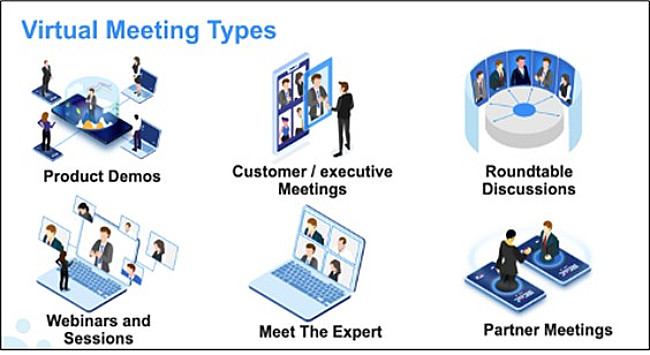There's a moment in David Mamet's Glengarry Glen Ross when the hotshot salesman sent by the head office confronts the lackluster sales team and exhorts them to close their leads—or be fired. But a salesman, played by Jack Lemmon, is having none of it: "The leads are weak," he explains.
So, what constitutes a strong—or good—lead?
Sales teams look to Marketing to deliver leads that are qualified and primed for closing. As we marketers develop our lead funnel, our objective is to move thousands of prospects through the funnel, from initial discovery and awareness to brand and sales messages, education and consideration, and finally to close—or so we hope.
We allocate our annual marketing budget with one metric in mind: the ROI of our marketing spend, measured in terms of sales pipeline and revenue. There's a lot of attrition along the sales funnel—thousands of prospects drop out for whatever reason. But the goal is to maximize prospects into Marketing-qualified leads (MQLs): leads sufficiently interested in our product or service to be handed over to Sales.
At that point, the sales team qualifies the leads as "good" or "weak"—a process through which MQLs become Sales-qualified leads (SQLs), ready for the next phase of the sales journey.
Nobody wants to hear "the leads are weak," so we must continually strive to maximize lead quality across all marketing channels.
One important ingredient in lead qualification is prospect engagement.
Does a lack of in-person events mean fewer Marketing-qualified leads, fewer engaged prospects, and fewer wins?
For the past year, driving strong leads has been especially challenging for marketing event teams that plan corporate conferences or tradeshows, field-marketing teams that manage local events, and demand gen teams that run webinars or social media campaigns.
Let's focus on events, since they have been hit especially hard by social distancing.
After being forced to abandon plans for in-person live events, conferences, and tradeshows, event teams have instead reinvested in virtual events and webinars. Those are great ways to assemble large groups of people, but the virtual setting omits a crucial sales tool that is normally integral to in-person events: face-to-face meetings with prospects and customers.
Prospect meetings are an indispensable tool for growing the B2B sales pipeline, which is the leading indicator for revenue. An enterprise sale process involves moving prospects from awareness to the education, consideration, and decision phases. In B2B sales situations, the latter three phases generate better results when the focus shifts to one-on-one meetings, product demos, expert meeting, executive meetings, partner meetings, etc.
Today, because those crucial face-to-face meetings are impossible, marketing and sales teams are focusing on virtual meetings. If marketers can do that at scale, Sales can get something even more valuable than a Marketing-qualified lead: a Marketing-qualified meeting (MQM).
Marketing teams at successful enterprises are generating hundreds or even thousands of MQMs. Those teams have concluded that it is no longer sufficient to just deliver an MQL. MQLs are still important, but you cannot afford to stop the process at generating MQLs from raw leads.
Classic virtual events can be top MQM drivers
Consider the following illustration of various types of B2B customer meetings that we can now handle virtually:

If prospects' meetings with experts and our executives are more valuable than raw leads, we need to generate more of them.
In years past, when customers wanted to see a demo, they attended an event, roadshow, or breakout session. But those activities will be virtual for the foreseeable future. A customer can still request a "meet the expert" briefing or a VIP meeting before committing to a multimillion-dollar purchase—it will just be handled virtually.
The same goes for roundtables with partners, distributors, and customers, and any situation where multiple people convene to solve problems and discuss solutions.
Webinars and other virtual events are now one of the most powerful tools to accelerate the buyer's journey, and sessions with experts and partners are always essential to convincing customers to move to a new technology or solution.
Focus on MQMs to drive pipeline and revenue
If you want to grow your revenue, you must first grow your pipeline. The higher the revenue target, the more pipeline you need in place, as pipeline is the leading indicator of revenue (which is itself a lagging indicator of marketing success).
The surest way to predict and build pipeline is to focus on maximizing scheduled B2B customer meetings and other interactions.
In short: MQMs drive pipeline, which then drives revenue.
A successful MQM program will generate a high volume of meeting requests, which must be closely managed and tracked for effectiveness and follow-up. Setting up a meeting with a prospect or customer can require a dozen emails and calls if handled manually, so enterprises that are serious about booking MQMs at scale should use a meeting automation platform (MAP).
By adding a MAP to your marketing tech stack you'll be able to significantly scale up your MQM capabilities because it will automate three time-consuming tasks:
- Pre-meeting scheduling: orchestrating meeting setup for attendees and ensure each has the information needed to make the meeting successful
- Workflow management: providing the meeting managers or marketing ops team the ability to oversee all meeting requests and confirmations, ensure relevant sales information is captured, and manage meeting logistics
- Post-meeting analytics: meeting and influenced revenue metrics dashboards, and management of surveys to understand performance and buyer intent
Think about how you might add MQMs across your multichannel digital marketing programs, both globally and regionally. By booking more virtual customer meetings, you will shorten your sales cycle and drive more wins out of your sales pipeline.
Other Resources on Marketing-Qualified Leads
Six Steps to New Sales via Strategic Lead Generation
How to Generate Leads in a Competitive Digital Landscape
Maximizing Lead Generation Marketing ROI (Part 1): Lead Quality Counts




